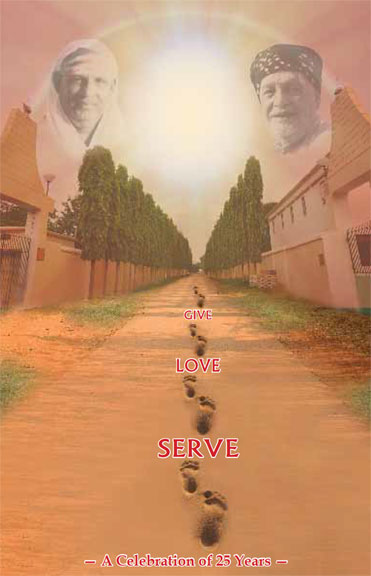
Branches of Yoga
The Beginner, Intermediate, Advanced yoga classes take you systematically through some aspects of the branches of yoga, as per the Bihar School of Yoga and Satyananda Yoga teacher training.
Bihar School of Yoga or Bihar Yoga or Satyananda Yoga in Munger, Bihar, India teaches all the branches of yoga, as per their true aims.
Hatha
Hatha Yoga is a catalyst to awaken and balance the two energies, the vital force (Pranic) and mental force (Chitta) that govern our lives. The techniques of Hatha yoga harmonize and purify the body systems and focus the mind in preparation for the more advanced practices of Raj yoga and chakra and kundalini practices. Hatha yoga asana (poses), shatkarmas (physical and mental detox techniques), Mudras and Bandhas (Psycho - physiological energy release technuiques) pranic awakening practices. Preparation practices.
|
Jnana Yoga
*"Jnana Yoga is the process of converting intellectual knowledge into practical wisdom. Jnana Yoga is described by tradition as a means to obtain the highest meditative state and inner knowledge.
Jnana literally means ‘knowledge’, but in the context of yoga it means the process of meditative awareness which leads to illuminative wisdom. It is not a method by which we try to find rational answers to eternal questions, rather it is a part of meditation leading to self-enquiry and self-realization.
Some of the components of Jnana Yoga are:(1) not believing but realizing, (2) self-awareness leading to self-analysis, (3) experiencing knowledge, (4) realizing the personal nature, (5) developing intuitive wisdom, (6) experiencing inner unity."
|
|
Raj
(Yoga Psychology) Preparation of the mind is dealt with in Raj yoga. It is the system of the Yoga Sutras Sage Patanjali which describes the 8 limbs of yoga. Human behavior and personality can be refined with the yamas (restraint) and niyamas (disciplines), asanas (poses), pranayama (expansion of life force), management of mental and emotional conflict, development of awareness and concentration, techniques, pratyahara (reducing mental impressions), dharana (concentration techniques), dhyana (meditation techniques) for the development of the creative aspect of consciousness and for transcendental awareness, samadhi (absorption in the universal identity).
|
|
Karma Yoga
When we perform an action, we become attached to that action via the ego, to the result of that action, the fruit of the action. Negative emotions thus tend to take over. This affects us negatively. The outcome, if it is not as we intended it to be also affects us negatively. There is depression, sour grapes attitude, anger, irritability, frustration. Keeping ourselves detached from the desired outcome, yet doing our best, staying focused in the here and now, managing ourselves and our mind positively, efficiently towards the goal is where Karma Yoga helps.
*"With Karma Yoga, a system which develops immunity to the reactive and negative components of an action. This awareness of action leads to a greater ability to manage mental associations in the form of desires, ambitions, ego and other personality complexes.
The aim of Karma Yoga is to gain freedom from the bondage of karma which restricts and inhibits dynamic, creative and constructive expression in life.
Karma Yoga is a sadhana and not a practice. The state of Karma Yoga can be attained through seva (selfless involvement in all activities), the spirit of which can be imbibed under the guidance of a competent master."
*In the Bhagvad Geeta Lord Krishna explains this to Arjuna. Swami Niranjanananda Saraswati has written a discourse on the Bhagvad Gita in modern language.
|
|
Bhakti Yoga
*"Bhakti Yoga is the path of channelling the emotions and feelings to realize the transcendental and divine nature inherent in every human being. Many people describe this as the yoga of devotion and give it a religious bent, however, it is through Bhakti Yoga that it becomes possible to experience the unity of all life.
Negative emotions and ego tend to take over when living in the empirical world. The mind limits us, keeps us down, like gravity. Bhakti Yoga helps to pull us out of this towards the higher, positive emotions. Constant awareness is required and necessary to know when the negative emotions spring up within us, so that we can change to the opposite positive emotion. Kindness is a good place to start.
Swami Niranjanananda Saraswati emphasizes 'Pratipaksha Bhaav', 'opposite', changing the negative emotion to its positive counterpart.
The stages of Bhakti Yoga can be classified as follows: (1) meditation, to realise and channel emotional energy, (2) mantras and kirtans, to open the heart, (3) identification with the source of inspiration and life, God, Cosmic Consciousness (4) experiencing transcendental human qualities in daily life.
The validity and depth of Bhakti Yoga can only be understood by realizing the experiences of union that masters have had over the course of their lives. The Bhakti Yoga Sagar series describes this process of the human journey towards divinity in a clear and concise form."
|
|
Kundalini Yoga
- Kriya Yoga
- Mantra Yoga
- Nada Yoga
- Swara Yoga
*"The practices of Kriya Yoga were propagated by Sri Swami Satyananda Saraswati from secret teachings described in the Yoga and Tantra Shastras. The kriyas, as taught by Satyananda Yoga, are one of only two systems of Kriya Yoga recognized the world over, the other being that of Paramahamsa Yogananda.
The word kriya means ‘activity’ or ‘movement’ and refers to the activity or movement of consciousness. Kriya also refers to a type of practical or preliminary practice leading to total union, the final result of practice. Kriya Yoga does not curb mental fluctuations but purposely creates activity and awakening in consciousness. In this way all faculties are harmonised and flower into their fullest potential.
Kriya Yoga originated in antiquity and evolved over time through practice and experience. The full form of Kriya Yoga consists of over 70 kriyas of which only 20 or so are commonly known."
LAYA YOGA
Under the direct instruction of the Guru.
*The sections in the quotes are from www.biharyoga.net in order to maintain authenticity.
|
|
|